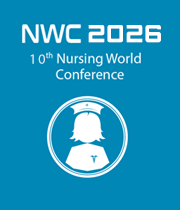Title : Innovative gamification in community public health nursing education: Exploring the U.S. healthcare system through virtual escape rooms
Abstract:
Background/Purpose: Community public health (CPH) nursing education is an essential component of pre-licensure nursing programs, preparing students to address social determinants of health, promote population well-being, and respond to public health challenges. However, many nursing students show limited interest in community public health nursing education and career, favoring acute care setting instead. This preference is reflected in poor attendance, lack of engagement, and minimal interest during CPH lectures, particularly on complex topics like the U.S Healthcare System. To enhance engagement and learning outcomes, the CPH curriculum must adopt innovative pedagogical approaches. Traditional lecture-based methods are less effective for Generation Z students, who thrive in interactive, technology-driven, and visually engaging environments. Recognizing this, the CPH didactic course piloted gamification to teach the U.S. healthcare system. This innovative teaching method aims to enhance learning, align with student preferences, and promote active participation.
Methods: The "10-10" teaching method was implemented in the U.S. healthcare system lecture to enhance student engagement and understanding. This approach alternates between 10-minute focused lectures and 10-minute virtual escape room activities. During lectures, students can challenge the instructor with questions or opinions. Exceeding the time limit rewards students with extra gaming minutes and snacks. Each escape room reinforces the lecture content through puzzles and code-finding games, offering practical application of concepts. The escape rooms were developed using Microsoft OneNote, ChatGPT-4, DALL·E 3, and Genially. Over a 2-hour session, students completed three lecture-game cycles, making the learning experience interactive and engaging.
Results: Students responded satisfied with the gamified learning experience, and 80% of students would recommend it to their peers during 2023-2024 preliminary pilot study at the University of Maryland School of Nursing (UMSON). Gamification improved UMSON BSN students’ learning and engagement in learning the U.S. healthcare system.
Conclusion: The "10-10" teaching method further supported focused attention and minimized distractions throughout the session. However, challenges included the time-intensive process of designing gamified content, presenting complex material in limited time, and resolving technical issues, such as platform integration.
Implications for Public Health: Innovative pedagogical approaches in CPH nursing education hold significant implications for the broader public health landscape. By fostering active student engagement and interest in community health topics, these strategies contribute to preparing a workforce that is better prepared to address population's health needs. Enhancing students' understanding and appreciation of community public health can lead to a career direction toward community-based settings. This shift is critical for addressing public health workforce shortages and ensuring equitable, community-oriented care.



